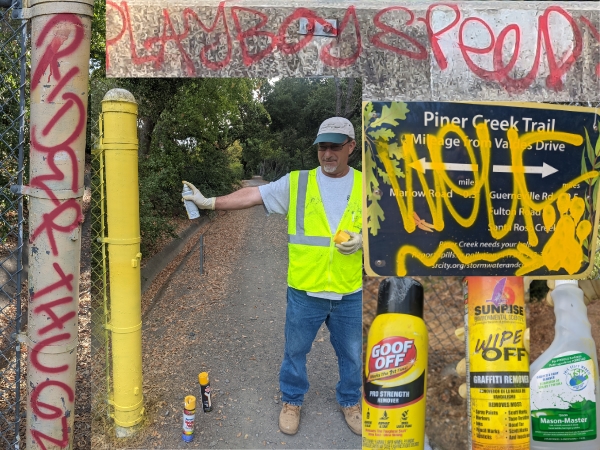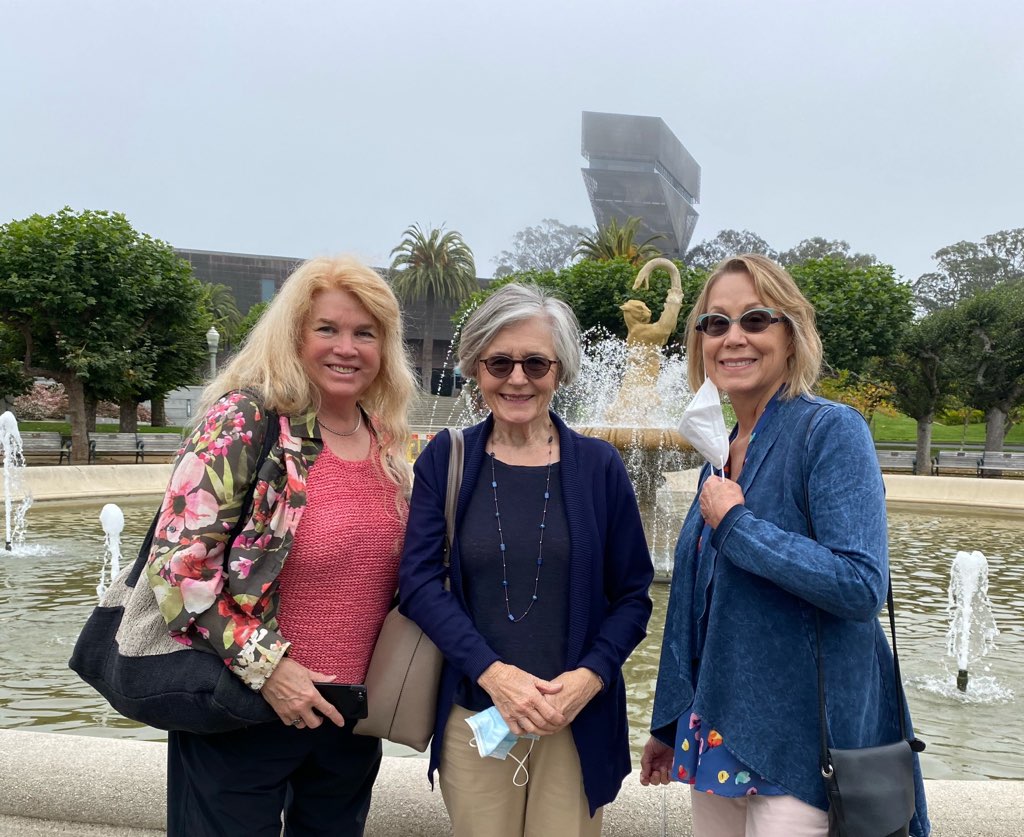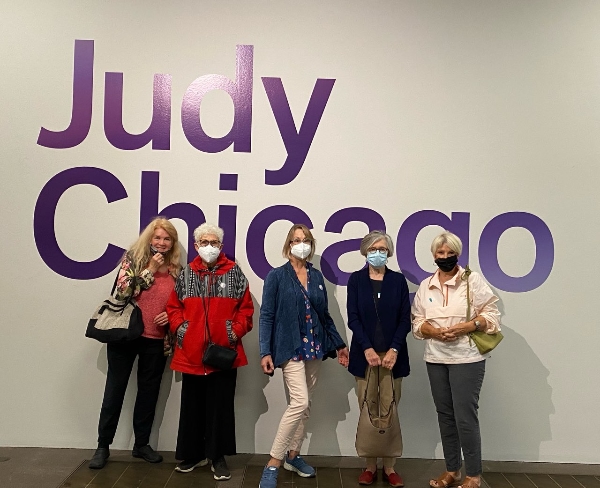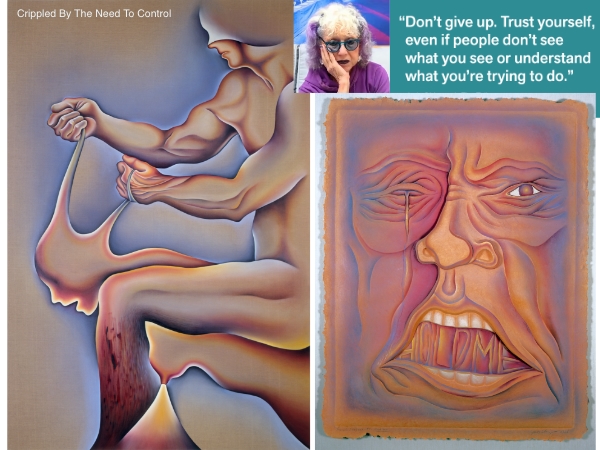Irene Lyon says that, ideally, we develop a sense of safety and belonging within our bones, guts, and cells as our attuned caregivers encourage us to feel self-worth and personal agency over the pivotal first three years of our lives. Because we are too young to think and reason, our learning is stored into our body posture and the muscles that move us, the muscles that give us strength and a felt-sense of confidence to take on the world.

Photo taken by Mother
The sensation that we are worthy of the effort it takes to get what we want comes up from our gut which sends more signals to the brain than the brain does down to the gut. As we grow up, we become conscious of our thoughts which get laser-beamed down to the gut, reinforcing the feeling that we can cope with the challenges of our life.

Afferent Signals Arrive in the Brain

Calm is not the same as Regulated – PVI Oct. 2023
The energy that forms how we sense our gut and organ systems (what we call our Sixth Sense) defines our sensations of ourselves as physical, emotional, mental, relational and creative beings. When we are unable to connect to ourselves, to others and our to environment, this shut-down behavior is often described as PTSD. How did this connection get faulty?
For some of us, it goes back for generations, including how our parents were raised and how they mirrored this behavior in our early years. Where large broods are the norm and poverty is widespread, babies were often seen as “yet another mouth to feed” rather than an opportunity to build something wonderful for the next generation. Beating children and chronic shaming practices that use disconnection (get out of the car, now!) and humiliation as a way to control a child’s behavior creates a high level of toxic stress and biological shame that becomes infused into the ENTIRE organism of the young child. In very young children, these feelings are learned as body sensations, which can’t be rationalized later as words or stories. These bad feelings must be addressed where they are: in the body and nervous system.
Those of us who experienced this kind of toxic shaming in infancy and childhood don’t know what it means to feel safe and relaxed in our bones, gut, and cells. We have learned to always be on guard and to express something along the lines of
“all connection is bad and everyone is to be suspected as dangerous and a threat.”
The chronic betrayal by parents and primary caregivers, from which an infant or toddler cannot escape, can instill a quality of hopelessness and defeat such that the person, as an adult, will feel they are in fact bad meat. This underlies self-harm and addictions. The internalized belief that they don’t deserve to be treated well (as the adult may have screamed while the beating the child) leads them to risky situations and abusive relationships. The pervading sense that they are not valued, or even wanted, can lead to a constant cycle of resistance to doing the work, fleeing from healthy behaviors, and rejecting the care of healers and supportive situations. See Irene Lyon‘s blogpost on why every trauma survivor CAN heal, but not everyone will.
For those of us who had mothers who were not capable of soothing us, we lived our early lives ping-ponging between hypervigilant and freeze response. We must learn what it feels like to be biologically calm and to cultivate an internal sense of safety and connectedness. So much restoration work is required, including realizing that maybe the mother herself never felt safe or calm. Coming to accept that my mother could not soothe me, even though I was capable of being soothed by my godmother, allowed me to forgive both my mother and myself. I see now that maybe I am good seed that fell upon rocky ground.
Oprah says, “Feeling that you deserve something is not the same thing as feeling worthy.” And simply feeling deserving and worthy doesn’t mean there isn’t a Competing Commitment such as “if I become biologically calm, I won’t be on the same wavelength as my family and they will reject me because they believe that I must be like them to be liked by them.” If someone has a (maybe unconscious) belief that getting well would betray their connection to their (birth) family, they might get trapped on the hamster wheel of spiritual seeking. See this Harvard Business Review article titled The Real Reason People Won’t Change.
Update Dec 2021
NYTimes Opinion “Opioids Feel Like Love”
The connections between brain opioids and motherly love were first explored by the neuroscientist Jaak Panksepp decades ago. Dr. Panksepp, who died in 2017, told me that when he first tried to publish data connecting brain opioids to attachment, he was rebuffed by a top medical journal. His research showed that morphine, in doses so low that it didn’t cause sleepiness, eased separation cries made by baby animals in multiple species.
The idea that the purest, most innocent love — between parent and child — could have any commonalities with the degradation of heroin addiction was “too hot to handle,” Dr. Panksepp told me. Today, however, decades after he published his work in another journal, what is now known as the “brain opioid theory of social attachment” is widely accepted.
When people nurture children or fall in love, hormones like oxytocin are released, infusing memories of being together with endorphin-mediated feelings of calm, contentment and satisfaction. This is one way that social contact relieves stress, making bonding a fundamental protector of both mental and physical health. When we are far from our loved ones or sense that our relationships are threatened, we feel an anxiety that is not unlike withdrawal from drugs.
So if “all connection is bad and everyone is to be suspected as dangerous and a threat,” the endorphins and oxytocin are not endogenously generated. Attachment does not become pleasurable or soothing. Spending time with others does not produce “calm, contentment and satisfaction.” No wonder Maia Szalavitz says “Addiction is A Learning Disorder.”
Update October 2023
BOTSA PDF link updated Brain Opioid Theory of Attachment. The endogenous opioid system plays a central role in sociality in primates, including humans. Conclusion:
We conclude that there is significant evidence for a role for the endorphin system in a range of mammalian bonding behaviours, including separation distress, play, gregariousness, grooming, infant attachment behaviours, positive affect and affiliative behaviours.
It goes on to say that emotional pain is reduced not only by endogenous opioids but also by oxyctocin, so maybe a caring kiss really does soften the pain. Reducing emotional pain using opioids, endogenous or not, flattens all emotions, not just the painful ones.
 Endogenous opiods ties in with pain management using self-hypnosis according to David Spiegel, MD, Associate Chair of Psychiatry & Behavioral Sciences at Stanford University and founder of Reveri self-hypnosis app. At about 40 minutes in to this podcast, he suggests that pain can be managed when self-hypnosis activates endogenous opioids in the dorsal portion of the anterior cingulate cortex (midline “default mode network” emotional regulation).
Endogenous opiods ties in with pain management using self-hypnosis according to David Spiegel, MD, Associate Chair of Psychiatry & Behavioral Sciences at Stanford University and founder of Reveri self-hypnosis app. At about 40 minutes in to this podcast, he suggests that pain can be managed when self-hypnosis activates endogenous opioids in the dorsal portion of the anterior cingulate cortex (midline “default mode network” emotional regulation).
If you say, “Your hand’s in ice water, cold, tingling, and numb,” [an MRI shows that] you turn down activity in the somatosensory cortex here. If you say, “Well, the pain’s there, but it won’t bother you,” which is sort of the way people on opioids sometimes feel, it was in a different part of the brain, the dorsal anterior cingulate, which is a part of the brain that we’ve shown turns down activity when you go into hypnosis, so we understand how the brain is doing it.
Jan Winhall said, on October 5, 2023 in a PESI seminar, that trauma survivors can work to remove danger from their surroundings but that the numbing behavior, which was an adaptive coping strategy, sometimes continues and interferes with connection with the self and with others. She recommends shifting away from a pathologizing model of these adaptive behaviors and, when safe, to “turn down the dial” on endogenous opioid production so the person can titrate the willingness to tolerate emotional pain and “revivify” emotional attachment.









 Endogenous opiods ties in with
Endogenous opiods ties in with 

 This theater does not cater to the kind of people who don’t get vaccinated, so I felt pretty safe.
This theater does not cater to the kind of people who don’t get vaccinated, so I felt pretty safe. A couple of weeks ago I got a frantic call from my friend Martha. She was at SFO and could not find her auto ignition key to drive home. Would I drive across town to get her spare key and drive it from Santa Rosa to SFO? I did. Because it was rush hour, it took four and a half hours to get back home. To thank me, Martha treated me to a zipline through the redwoods. Here is a video of Martha on the longest of the five runs. There were also two swinging bridges that demanded balance as well as hiking uphill, and a 60-foot rappel which was as fun as I hoped. This ziplining is not cheap because it supports the Redwood Alliance which sheltered homeless this Covid winter, and provides lodging and meals for firefighters working on summer blazes in the redwoods.
A couple of weeks ago I got a frantic call from my friend Martha. She was at SFO and could not find her auto ignition key to drive home. Would I drive across town to get her spare key and drive it from Santa Rosa to SFO? I did. Because it was rush hour, it took four and a half hours to get back home. To thank me, Martha treated me to a zipline through the redwoods. Here is a video of Martha on the longest of the five runs. There were also two swinging bridges that demanded balance as well as hiking uphill, and a 60-foot rappel which was as fun as I hoped. This ziplining is not cheap because it supports the Redwood Alliance which sheltered homeless this Covid winter, and provides lodging and meals for firefighters working on summer blazes in the redwoods.  Feeling stressed really impairs my ability to read. I find it hard to stay focused so I have been listening to audiobooks. Sapiens now has available a “graphic history.” I read part one as an accompaniment to the audiobook, and part two has just been published. I enjoyed seeing the images of the now-extinct animals.
Feeling stressed really impairs my ability to read. I find it hard to stay focused so I have been listening to audiobooks. Sapiens now has available a “graphic history.” I read part one as an accompaniment to the audiobook, and part two has just been published. I enjoyed seeing the images of the now-extinct animals. 



